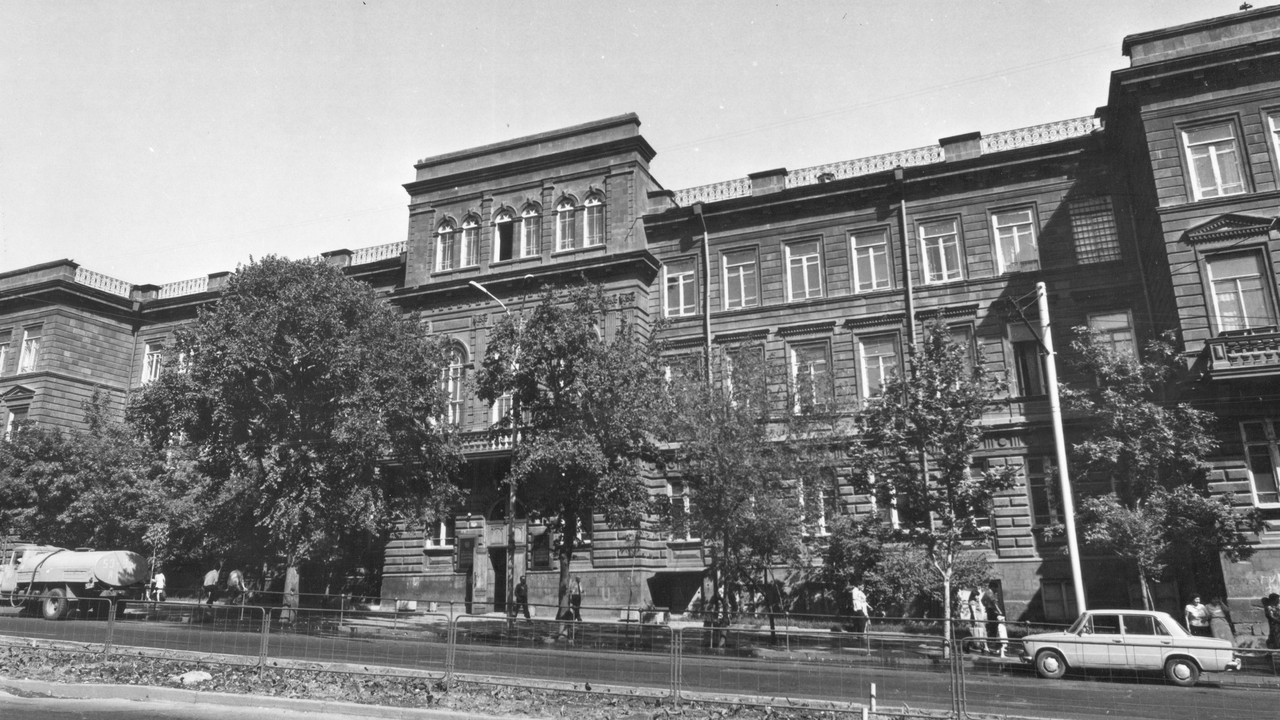HISTORICAL BUILDINGS

EDUCATIONAL SEMINARY
1906
State index: 1.6.177
Architect: Vasily Mirzoyan
The structure is located at Abovyan Street 52, in the neighborhood bordered by Abovyan, Heratsi, and Koryun Streets, adjacent to Yerevan State Medical University.
The educational seminary
was inaugurated on November 8, 1881, initially comprising two classes:
preparatory and first. In 1882, the second class was opened, followed by the
third class in 1883. Similar to other educational institutions in the Caucasus,
the seminary operated on a four-class system throughout its existence.
According to statistical data from 1907, 50 out of 70 students studied at the
state's expense. In 1883, at the proposal of the Caucasus Department of the
Russian Geographical Society, a meteorological station was established next to
the seminary. This station was one of the first and most efficiently
functioning stations in Yerevan.
In 1915, the seminary’s black building was
requisitioned by the military garrison, prompting the relocation of the
educational institution to Armavir. During the First Republic of Armenia, the
building housed an orphanage for children who survived the Armenian Genocide.
In April 1919, with an agreement signed between the government of the First
Republic of Armenia and Amercom (the American Relief Committee for the Middle
East), the orphanage came under the guardianship of Amercom.
On May 16, 1919, the Government of Armenia decided to
establish a university in Yerevan. Due to the lack of a suitable building, the
university initially opened in Gyumri and subsequently relocated to Yerevan in
1920, occupying the renovated building of the Teaching Seminary from which the
orphanage had been removed. Courses commenced on October 1.
Following the establishment of Soviet rule in Armenia,
the university was renamed Yerevan People’s University in 1920, and on October
20, 1923, it became a state university. The renowned Armenian scholar and
professor Hakob Manandyan was appointed as the rector of the reopened
institution. In the 1960s, the university moved to Mravyan (now Alek Manukyan)
Street to occupy a newly constructed building. The Faculty of Economics
remained in the black building, eventually becoming a separate university, the
Institute of People's Economy (now Armenia State University of Economics (ASUE)).
Since 1995, the ASUE has relocated, and the building once again serves as a
university building, housing the faculties of history, economics, and theology
of Yerevan State University.
The interior of the building has undergone several
transformations. In the 1930s, a third floor was added, while preserving the
building's overall architectural style.
The courtyard of the seminary contained the grave of
the first rector of the university (1921-1922), historian Hakob Manandyan
(state index: 1.6.177.1), which was transferred to the Pantheon named after
Komitas in 2001.
The building comprises three floors with a basement,
featuring a complex plot structure due to its operational significance. It
consists of the main building and three auxiliary buildings: central and two
side buildings. The construction material is Yerevan black tuff with a midis
texture.
“Scientific Research Center of Historical and Cultural of Heritage” SNCO
Yerevan Municipality


